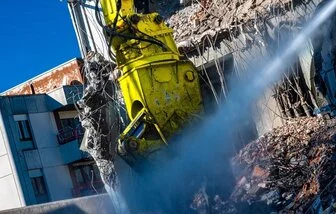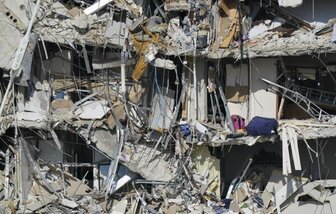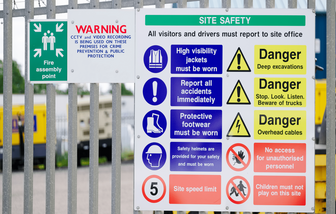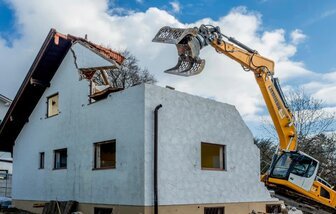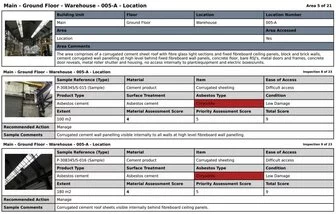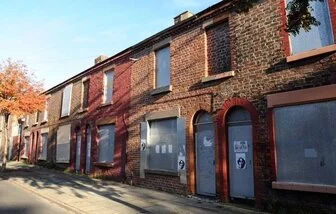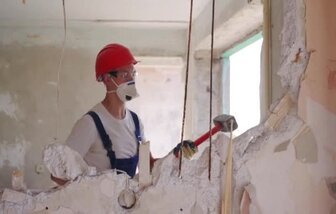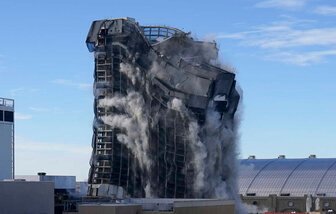What is a Pre-Demolition Survey?
We focus on working to the highest professional standards and seek to develop strong and sustainable relationships with satisfied customers, with an emphasis on ensuring projects are delivered on time and to specification
Pre-demolition survey overview
When a building is to be demolished the (non-domestic) client (usually the property owner) has a duty to provide pre-demolition information to the designer and contractor. This will involve a pre-demolition investigation and survey.
Before any work commences, a full site investigation must be made by a competent person to determine the hazards and associated risks which may affect the demolition team and members of the community who may pass close to the demolition site.
The competent person is often a specialist structural engineer who will also advise on the temporary support to adjacent buildings and the correct method of dismantling or demolition.
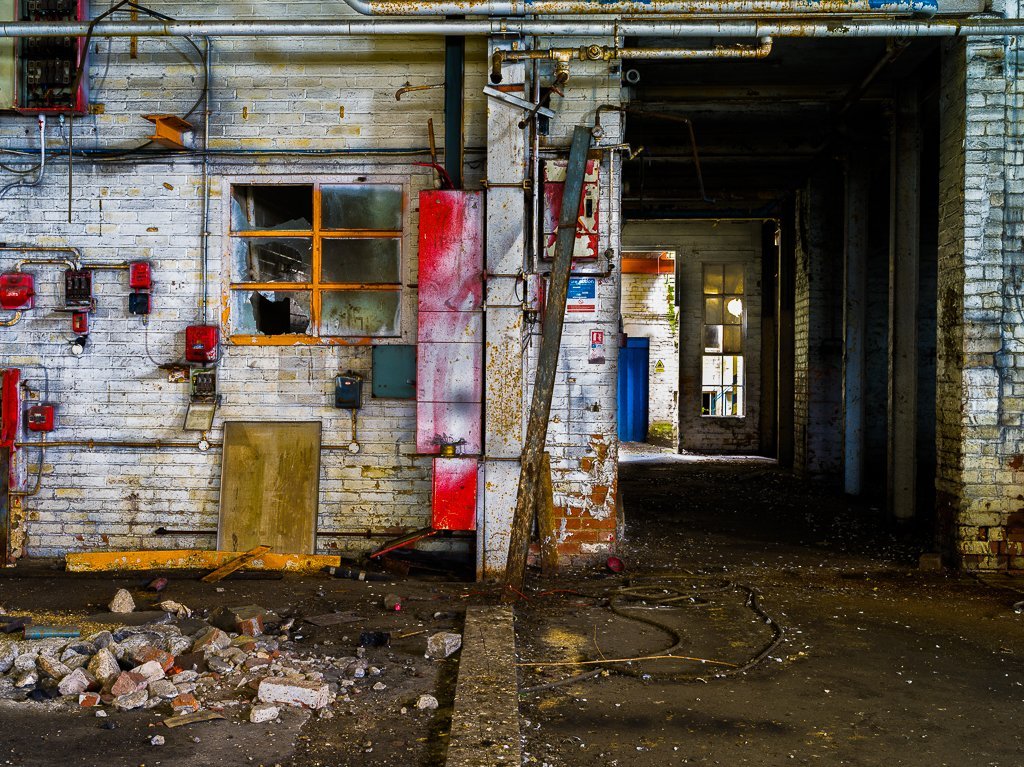
Pre-commencement demolition survey
There are several pre-commencement surveys that may be necessary to ensure the health and safety of all personnel on site. These include:
- A services survey to locate any existing services on site;
- A asbestos survey to identify asbestos-containing materials on site;
- A soil survey to identify contaminated ground; and a ground survey to determine the load-carrying capacity of the ground
The investigation pre-demolition survey should cover the following topics:
- The construction details of the structures or buildings to be demolished (including the materials used, fragile roofs, rot and extent of any dilapidation, significance, and extent of any dilapidation of the structure, the presence of cantilevered structures and any general weaknesses) and those of neighbouring structures or buildings;
- The identification of key structures elements including pre-and post-tensioned components
- A review of drawings, structure calculations, health, and safety file, etc. related to the structure.
- The previous use of the premises
- The load-carrying capacity of adjoining land including the presence of underground culverts;
- The need for possible temporary support structures for the building being demolished and adjoining buildings;
- The location of any dangerous machinery;
- The presence of asbestos, lead or other hazardous or radioactive substances and any associated health risks;
- Environmental issues, such as dust, water pollution and noise;
- Public safety including the provision of high fencing or hoarding;
- Manual handling issues;
- The location of any underground or overhead services (water, electricity, gas, and sewage)
- The location of any underground cellars, storage tanks, chimneys, balconies, or bunkers particularly if flammable or explosive substances where previously stored;
- The means of access to the site;
- The removal of waste;
- The details of any traffic or pedestrian routes through the site;
- The provision of welfare facilities;
- The proximity of neighbours;
- The location of any public thoroughfares adjacent to the structure or building;
- The age of the structure;
- Its previous use;
- The type of construction;
- Nearby buildings or structures; and the weight of removed materials or machinery on floors above ground level
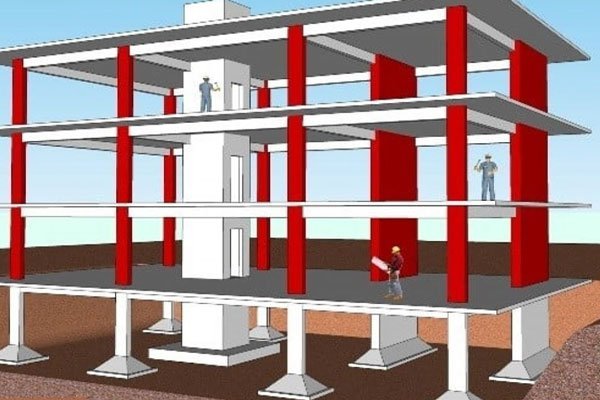
Comprehensive survey details of the structure of the building
The details of the structure of the building to be demolished would include whether it was built of brick. pre-stressed concrete, reinforced concrete, or steel.
There may be certain building regulations which cover the site, and the Local Authority Building Department should be contacted to establish whether any part of the site is affected by these regulations.
All structural alterations carried out to the structure in the past should be reviewed.
All demolition work requires those in control of the work to produce a written plan showing how the danger will be prevented. This will be the CDM coordinator’s responsibility on notifiable projects and the contractor or designer on non-notifiable demolition projects.
The written Health and Safety plan will include a demolition risk assessment of the state and design of the structure to be demolished and the influence of that design on the demolition method proposed.
This risk assessment will normally be made by the project designer who will also plan the demolition works. A further risk assessment should then be made by the demolition contractor undertaking the demolition works and a written method statement will be required before demolition of the building takes place.
The demolition project manager should arrange for suitable plant and equipment to be provided so that the work can be executed to the standards required by health and safety legislation, in particular the Control of Asbestos Regulations It may be necessary for the local authority and the police to be consulted about the proposed demolition work so that issues of public protection, local traffic management and possible road closures can be addressed. There should be liaison with the occupiers of addressed. There should be liaison with the occupiers of adjacent properties because, in some cases, they may need to evacuate.
Hazardous substances and traffic management controls
The provision of temporary access roads, welfare facilities, office accommodation, fuel storage and plant maintenance facilities on site will need to be considered at the planning stage. Effective traffic management systems are essential on site, to avoid putting workers at risk of being hit by turning vehicles, slewing or reversing. Where possible, vision aids and zero tail swing machines should be used.
The presence of hazardous substances and their release during the demolition phase must be considered at the planning stage. Most hazardous substances create a hazard for demolition workers by being inhaled, ingested, injected or coming into contact with or being absorbed by the skin. Environmental monitoring may need to be carried out in certain situations. Specialist advice should be obtained from appropriately competent persons. Some of the most common hazardous substances in demolition work include:
Lead – is most dangerous when it is in the air as a fume or dust, for example, cutting steelwork coated with lead-based paint or dismantling of tanks containing lead-based petrol
Asbestos – where possible it should be removed before any other demolition work commences and must always be removed by a licensed contractor,. Asbestos may be discovered in sprayed coatings, thermal and acoustic insulation materials, fire-resistant wall/partitions, asbestos cement sheets of flooring materials;
PCBs – a toxic substance found in electric transformers and capacitors, refrigeration and heating equipment;
Silica – occurs in stone, some bricks and concrete aggregate. Any demolition of structures constructed from these materials will give rise to dust containing silica
Residues of hazardous substances may also create a hazard to demolition workers. These could include:
- Acids from industrial processes;
- Paints
- Flammable liquids
- unidentified drums
- Microbiological hazards ( especially in old hospital buildings)
Storage tanks, vessels, pipes, and other confined spaces may also contain flammable vapours or toxic sludges-especially those which where formerly used in industrial or chemical processes. Plans must be made to dispose of any hazardous or dangerous substances found during the demolition process in a way which conforms to legislative requirements.
What is demolition?
The process involves Rotational hydraulic shears and rock-beakers attached to specialist excavators are also used to cut or break through wood, cut steel and crush concrete which reduces the structure to a rubble
What is a premature collapse?
Premature collapse of these structures is one of the main causes of serious injuries resulting from demolition activities. The most common type of incidents is the lack of planning before commencement
Demolition hazards
If a demolition project is well planned the risks of injury and death can be minimised. It should be emphasised that the planning and execution of a demolition project should only be done by appropriately competent persons.
What is a section 80 demolition notice?
If your considering demolishing an existing building you will need to submit a demolition, Section 80 Notice together with your (RAMS) to your local authority according to section 80
What is a pre-demolition survey
When a building is to be demolished the (non-domestic) client (usually the property owner) has a duty to provide pre-demolition information to the designer and contractor. This will involve a pre-demolition investigation and survey.
How to manage asbestos in demolition
One of the key issues arising in demolition these days is asbestos. Widely used in construction projects by previous generations, asbestos is now accepted as the UK’s largest occupational killer and there are strict guidelines for the safe removal
House demolition in Manchester
Why let your house demolition efforts feel stressful. We have over 50 years experience in house demolition in Manchester, we are able to deliver a variety of demolition and development services throughout Greater Manchester.
What is manual demolition?
Among the methods, manual demolition is found to be most applicable for most sites, especially for areas located in the urban zone. The safety of the demolition process would greatly depend on the type of procedure used.
What is non-explosive demolition?
You do not need explosives for every demolition job. Most people assume that for a demolition to be a demolition there is a need for a kaboom. It does not have to be that way
Structural demolition
Structural demolition is not a walk in the park. Total Group is well placed to deliver a safe, environmentally friendly and a budget wise project. We focus on a process that will assist you to salvage and recycle material for reuse.
What is high risk demolition?
The building contractor needs to make a thorough risk assessment to look for both risks and hazards. Control measures are then implemented to prevent any accident that could be fatal.
Controlled demolition methods
If you have a large building that requires demolishing, you cannot rely solely on manual demolition to get the project completed. There is only so much that a team of demolition contractors.
Ready to start your project ?
Let's Work Together
Please complete the form below and someone from the Total team will be in touch.

